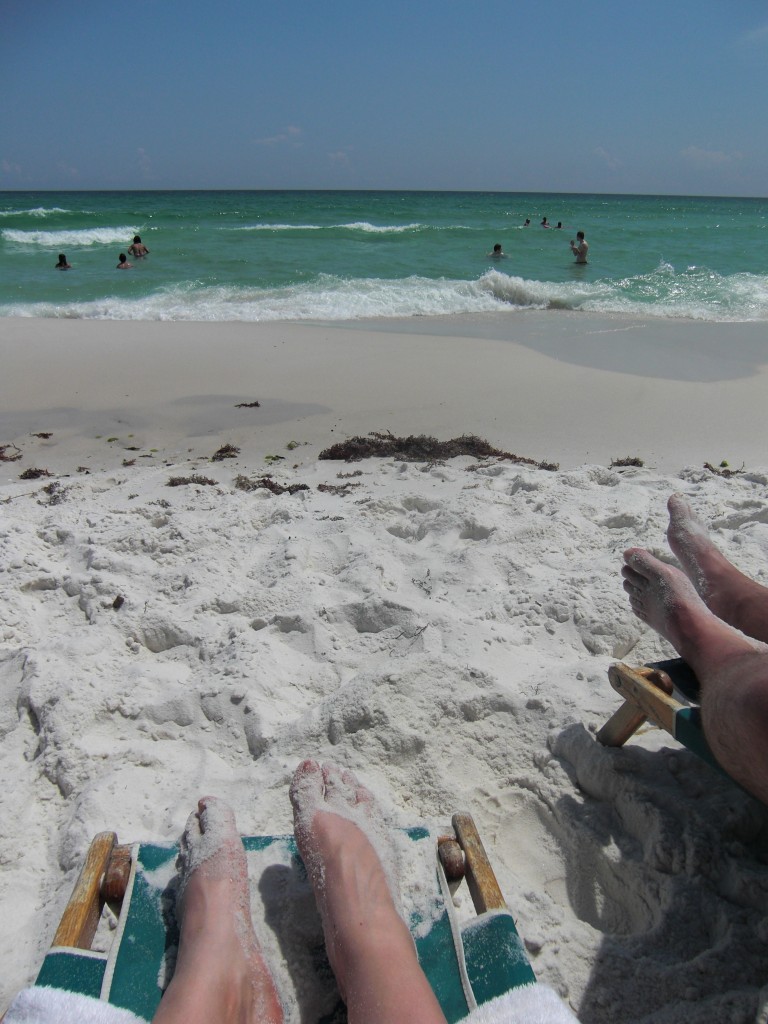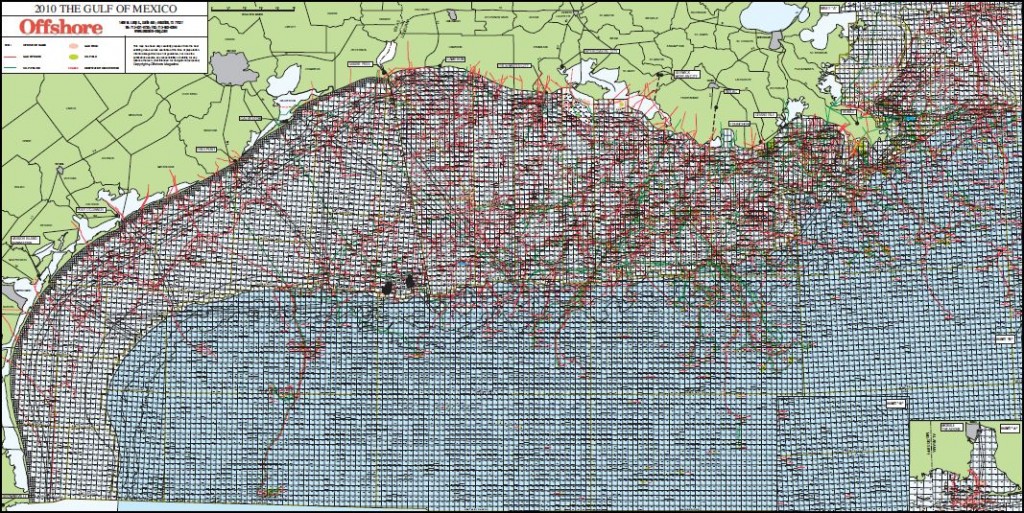While most people look at the Gulf of Mexico and see seafood and beaches, oil executives see the Gulf differently. They see a giant grid containing thousands of squares of possibility, each potentially yielding billions of dollars.
You see this:
 (photo credit: Dmitriy Pritykin)
(photo credit: Dmitriy Pritykin)
They see this, a grid of the entire gulf representing regions available for lease (click to enlarge):
 (source)
(source)
This is a close up off the Louisiana coast (green lines and regions are oil pipelines and fields, the pink are the same for gas):
 (source)
(source)
There are 6,652 leased squares, amounting to 22 percent of the lease-able Gulf (click to enlarge) and approximately 4,000 oil production platforms in the Gulf:
 (source)
(source)
I offer this only as an illustration of the degree to which the Gulf has been commodified. The Gulf is big, big, big business:
 (source)
(source)

Comments 6
Margarita — June 14, 2010
I have pictures showing almost the exact thing in a different context. I did some research on land development in South American and it was a similar story. What people saw were mountains and what the developers saw were grids for potential construction. Latour calls these "immutable mobiles", and I think they acquire added meaning when we are talking about the economization/marketizaion of environmental objects.
Ben Ostrowsky — June 14, 2010
Well, the top image is what "you" see if you've got pale skin and enough money to bring a brand-new, top-of-the-line (at the time) $300 pocket camera to the beach in the middle of the week. Digital photos can reveal more than they show:
http://regex.info/exif.cgi?url=http://thesocietypages.org/socimages/files/2010/06/CIMG2782.jpg
This sort of tool can be handy for learning more about how the images we're fed have been produced.
sherifffruitfly — June 14, 2010
GASP. People use different maps to show different information! Oh the outrage!
ViktoriaMorris — April 27, 2021
Thanks for the interesting post! It's strange for me to say this, but the authorities actually forbade leaving the house unnecessarily. I forgot how great it is to relax on the beach. I'm lucky to have my own pool in my backyard. I have no hassle with this since I have been using the robot to clean the pool. You can check it out by this link here. My parents saw this miracle and were also interested))
Allen — September 2, 2024
The Gulf oil industry is a dynamic and pivotal sector characterized by its immense scale and strategic importance. Dominated by major players like Saudi Aramco and the UAE's ADNOC, it features a blend of vast oil reserves, advanced extraction technologies, and extensive infrastructure, including refineries and export facilities. Take 5 Oil stands out as a notable example of the region’s innovation and efficiency in the sector. The industry is not only a cornerstone of the region’s economies but also a key influencer in global energy markets. Recent trends include increased investment in sustainability and diversification, as Gulf nations seek to balance their oil-driven revenues with long-term environmental and economic goals.
Hunter — October 25, 2024
The Gulf oil industry features vast reserves and advanced technology, primarily led by countries like Saudi Arabia and the UAE. While focusing on sustainability and renewable energy, it also navigates challenges such as fluctuating prices and environmental concerns. Interestingly, just as wildlife inspires creativity in naming, many seek unique raccoon names that capture their playful essence. The industry's future remains dynamic, balancing opportunity with adaptation.